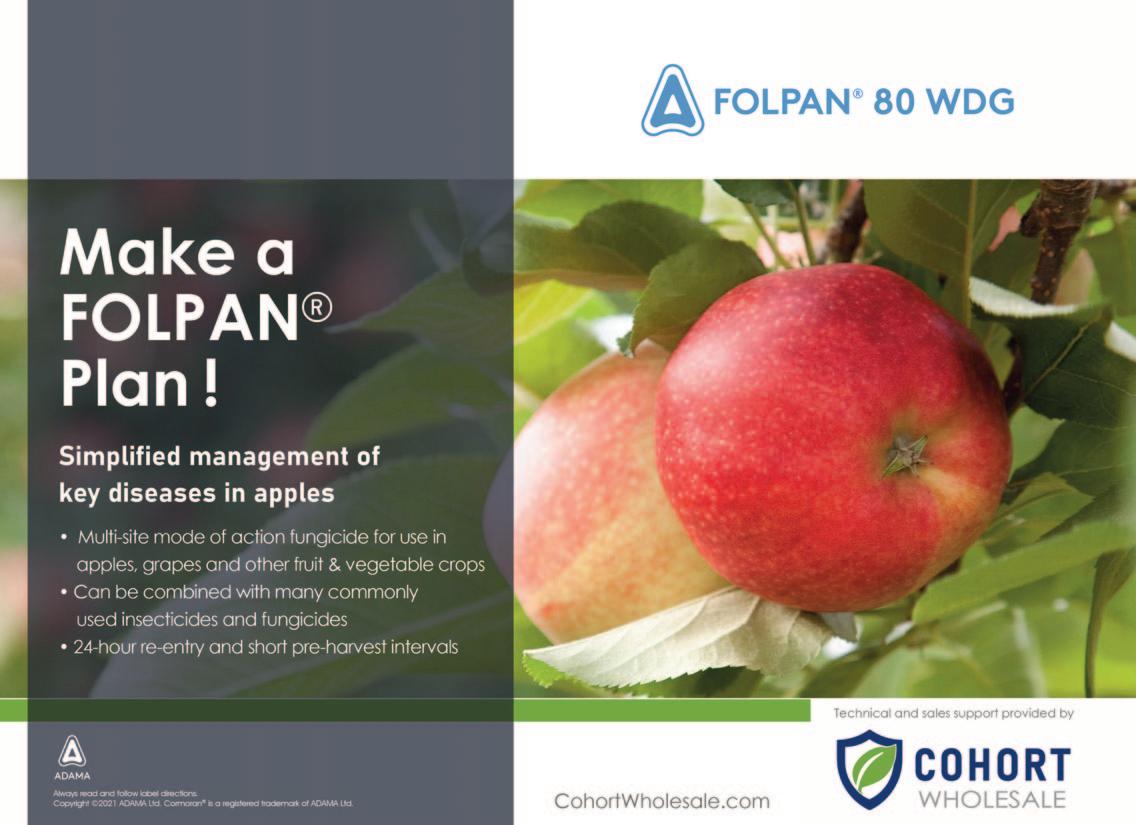
2 minute read
CORPORATION Grade standards have multiple uses
from The Grower May 2023
by The Grower
As we review questions from our members, we find they often forget the published grade standards have multiple uses that serve to minimize misunderstandings. Whether you specify a grade (US#1, Canada#1, etc.) or not the standards establish a lexicon, or recognized language, for describing fruit and vegetable commodities and associated defects. This common lexicon is necessary for buyers, vendors, government inspectors, private inspection firms and others to communicate in a common language in the same way we all know an inch, a foot, a centimeter, or a meter is always the same. Fruit and Vegetable Standards ensure terms like bruising, injury, damage, discoloration, watery scales have that same universal meaning.

The terms and definitions in the standards can be used to verbally define parameters for shipping and arrival expectations. This is important as fresh fruit and vegetables are generally purchased unseen from distant shipping point. The defined terms provide clarity to the contract specifications and in turn are the basis for establishing a failure to meet those agreed specifications (FOB Good Arrival as an example.)
When the Commodity Standard is used along with a specific grade (US#1, Canada#1, as examples) the agreement then is based on the defect limits of that published specified grade. The grade standards represent an overview of the quality, condition, generally appearance of the item, including the presence of defects (damage, insects, disease), size, shape, and colour. The standards also include the maximum tolerance of defects allowed to meet that specific standard.
While parties may create their own contract specifications outside of the established grades, they must ensure their agreement complies with any applicable minimum grade and condition standards that have been established by the importing or exporter country. Many commodities are traded based on “no grade good delivery” terms. Such contracts are still subject to individual country requirements for such things as maximum permanent defects, and sugar (soluble solids) content.
Our members and trading partners are very often surprised to find out the impact of grade standards when we are contacted to help resolve a problem transaction. What happens when one of the parties in a produce transaction believes that a commodity was purchased with a specific grade standard (US#1, CAD#1, CAT 1, etc.), but there is no written evidence that shows that this was discussed, understood, and agreed upon by both of the Parties?
Verbal communications are contractually binding if both parties agree on and understand the terms discussed. However, when there is a disagreement, or there is no meeting of the minds as to what was discussed verbally, the documents and written communications related to the transaction will determine the contract between the parties.
Where no specific grade requirement can be documented, the calculation of defects to support a breach of contract changes. Condition defects (those which change over time like decay and bruising) will be counted toward any breach of contract. Permanent defects (those such as scarring and off size) will not be counted toward any alleged problems on arrival.
In the absence of an agreement, the calculation of conformance to the contract will default to the DRC Good Arrival Guidelines. Remember, without an agreement only the condition defects may be counted to establish a breach of contract. Hence, when you are establishing the terms of the transaction and you are buying or selling based on a grade standard, making sure a grade standard is agreed, preferably in writing, is highly important.
Source: Dispute Resolution Corporation March 29, 2023 blog










